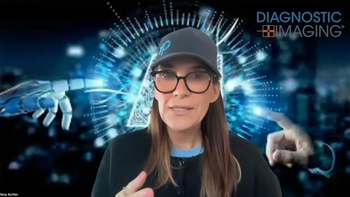
Texas CAD start-up jockeys for position in mammography
Approach differs fundamentally from competitors'Dallas-based VuComp is gearing up to mount a direct challenge to established mammography CAD competitors, taking aim at R2 Technology and CADx. The company plans to begin marketing
Approach differs fundamentally from competitors'
Dallas-based VuComp is gearing up to mount a direct challenge to established mammography CAD competitors, taking aim at R2 Technology and CADx. The company plans to begin marketing its
M-VU Mammography CAD system at the end of the year, hoping to supplant existing mammography CAD systems by improving the detection of small breast masses and clarifying otherwise vague architectural distortions. Company executives believe their technology will substantially reduce the rate of false-positive findings and streamline film scan time.
Meeting this goal depends on winning FDA approval for its M-VU system. Plans call for submission of a PMA application by the middle of the year. The company has already moved from Frisco, TX, to larger quarters in Plano to support production and shipping. Jeff Wehnes, president and CEO, is not prepared at this point to discuss how distribution will be handled, although it will combine elements of both a distribution network and a direct sales model.
The first systems off the assembly line will be directed toward CAD for mammography film, because film is the dominant modality. As soon as approval for a digital system comes through, VuComp will provide a software upgrade to its processing unit.
Initially, the company will place more emphasis on selling to medium and large mammography facilities, and it will add offerings suited for small clinics later. Early focus will be on the U.S. and European markets, although Wehnes believes European mammography centers may be skeptical about CAD. Without a strong level of reimbursement, such as that available in the U.S., European centers need a compelling reason to adopt the technology. Wehnes believes the CAD market there won't take off until European studies show a performance advantage with CAD.
VuComp's entry into the competitive mammography CAD arena is a natural extension of the work of its engineers, Wehnes said. Since 1986, he and his team of algorithm engineers have developed some of the most advanced military image-interpreting systems on the market for Raytheon and Texas Instruments Defense Systems. After working quietly for three years, and attracting more than $1.5 million in seed money, the company is ready to apply the same mathematical theory to mammography that it has used to make sense of video images of military targets.
Wehnes believes VuComp will have a competitive advantage in mammography CAD because it takes an entirely different analytical approach than other CAD suppliers, which rely on pattern recognition and neural network technology. Such learn-by-example systems can fairly quickly provide a means of identifying desired structural targets, but they have fundamental limitations, Wehnes said. It is just about impossible to provide enough examples for a neural network to really learn all it needs to learn, for instance, or to gain insights into exactly what the network learned. Also, bias can slip into the system. For example, a pattern recognition system might accidentally orient all examples of a knife vertically and then recognize all vertical objects as knives.
In contrast, VuComp extracts essential details, then mathematically models the essence of what it is trying to detect. A knife, for example, would be recognized only if it meets certain criteria, such as being tapered and pointed, and small enough to be handheld. The company's resulting CAD system, therefore, would identify a knife independently of the way it is oriented, Wehnes said.
"As imaging technology is able to resolve finer and finer details, it is providing more data to doctors, and something has to help doctors analyze all that data," Wehnes said. "The real differentiator in our minds is a way to help doctors find the masses and distortions that they most often miss and that are most important from a treatment perspective. Intelligent tools let doctors sort through data and focus on areas of interest so they can use their diagnostic skills."
Newsletter
Stay at the forefront of radiology with the Diagnostic Imaging newsletter, delivering the latest news, clinical insights, and imaging advancements for today’s radiologists.




























